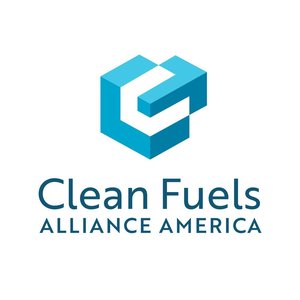Virtually PFI A Review
Energy Disrupter
ADVERTISEMENT
While the COVID-19 pandemic has made it impossible to conduct in-person annual conferences, since its global debut, most associations—including the Pellet Fuels Institute—have leveraged technology to gather for discussions. The Pellet Fuels Institute hosted VirtuallyPFI, its web-based annual conference equivalent, over the course of two weeks in late July and early August. The agenda, pulled directly from the original annual conference program, focused on wood pellet manufacturers and their upstream and downstream partners. The four moderated panel discussions collectively highlighted that while 2020 has brought unprecedented marketplace disruptions, it also offers potential for one of the better years for producers in a decade. Over the span of the event, the mood of panelists transitioned from breathing a tentative sigh of relief that the worst of the pandemic was behind them, to carefully guarded optimism for what the rest of the year might bring.
Producer Attitudes
On Aug. 4, VirtuallyPFI hosted a conversation featuring three member-producers to assess how they fared in the early days of the pandemic, their ability to find and buy the fiber necessary to meet production goals, as well as their customers’ appetite for their finished products. The discussion began with producers recalling the outset of the pandemic and the challenges they were confronted with in those first weeks. “Our first challenge was understanding if our operations were going to even be allowed to operate,” said Brett Jordan, CEO of Lignetics, a multi-facility producer. “That was a moving target for a bit, until the federal guidance on essential businesses came out. Once that was resolved, we really began to focus on what was happening with our customers, our retail partners.”
The concern for Jordan and others in the sector was what shuttered retail outlets would mean for late-season pellet shipments, and depending upon the length of any closures, critical inventory build-up during the increasingly important months of July and August. “We stayed running the entire time,” shared Matt O’Malley of O’Malley Wood Pellets. O’Malley discussed the undertaking of increased cleaning protocols and the distribution and use of face coverings, but at the same time, the pandemic’s early weeks coincided with a cool stretch in his marketplace, he said. “We were selling product steadily and running hard to keep up with demand.”
Pat Curran idled his Massena, New York-based Curran Renewables facility for a week, motivated by oil prices that plummeted to $11 per barrel. “In about a week, things caught themselves and oil prices started to recover, and we got back online,” Curran said. Since that brief outage, he added, his plant has been running 24/7, five days a week.
Data gathered and shared by the U.S. Energy Information Administration regarding its Monthly Densified Biomass Fuel Report suggests that Lignetics and Curran Renewables weren’t the only producers taking a cautious stance in the earliest days of the pandemic. The report shows that April 2020 production was the lowest since April 2018. However, the same data set shows that by June, producer confidence in the viability of the marketplace had returned, with the industry posting the largest June production total in the report’s history.
With the initial shock of the COVID-19 pandemic behind them, Jordan, O’Malley and Curran have their time focused on producing and selling pellets into a marketplace that finally seems to have heeded the industry’s calls to begin buying and taking wood pellets earlier in the season. Wood pellet producers have long bemoaned building and carrying large inventories of finished product over the summer months. “As a smaller producer, I don’t want to put any more product into inventory than I have to,” O’Malley said. “I tell our customers I’m open to any ideas to motivate them to take shipments from me earlier in the season.”
During the past five years, the market has demonstrated a strong trend toward increased sales during the peak of summer. In 2016, U.S. producers sold 400,000 tons of pellets in June, July and August. By 2019, this number had grown steadily to 534,000, and while the 2020 data doesn’t yet provide an entire picture of the summer, it does show that June sales topped 180,000 tons, the largest June on record and a 50,000-ton increase from June of 2019. “Without the increase in the early buy patterns, a company like mine would have a hard time existing,” Curran said. “We all want to run consistently to keep all of our men and women working, and for that you need consistent demand from the marketplace.”
Panelists pointed to increased communication and trust between manufacturers and retailers for the flattening of buying patterns across the sector. “We’re all aligned in that we don’t want to the consumer to have a negative experience and not be able to get their hands on heating fuel,” Jordan said. “I look back at 2016 when there was inventory everywhere, and there just wasn’t a need for any collaboration.”
In 2016, late summer pellet inventories swelled to over 600,000, nearly three times the inventory the industry had on the ground in August 2019. “These last few seasons it really has felt like a mutual effort,” said Jordan. “We’re finally moving the volumes in July and August that make room for that important fall production.”
Supply Chain Faces Challenges
On Aug. 6, VirtuallyPFI convened with a panel discussion featuring representatives from the broader hearth and wood products sector to gauge its health during a turbulent year.
Karen Smeltz, brand marketing director at Hearth & Home Technologies, shared that the company’s Halifax, Pennsylvania, location responsible for manufacturing the company’s pellet appliances expanded its normal springtime planned outage in response to the pandemic. “When the pandemic began, pellet appliance sales were off and some of our component suppliers had production interruptions, so we did come offline,” Smeltz said. “However, we began to see increased web traffic as consumers stuck at home began researching and shopping online. Retailers reopened their stores and adapted to virtual showrooms and curbside pick-up, and activity began to pick up. We came back online in early May and have had strong production throughout the summer.”
Jack Goldman, CEO of the Hearth, Patio and Barbecue Association, echoed Smeltz’s remarks, reporting that the organization’s specialty hearth members fared better than they anyone expected they might. “We were expecting really dismal numbers, honestly, and while we may not get all the way back to 2019 sales numbers, I think the sector is going to be close,” Goldman said. “And BBQ grills, they have been flying off of the shelves.”
Goldman also touched on ongoing challenges regarding federal regulations. In particular, those outlined in the New Source Performance Standards that govern the emissions profiles of appliances retailers are allowed to sell. The HPBA has pushed to achieve a sell-through provision that would allow retailers more time to sell out inventory of appliances that were certified under the Step 1 limits. The U.S. EPA has not granted an extension of the May 15 deadline, and the COVID-19 shutdowns eliminated precious selling days for retailers working through the last of their Step 1 inventory. “Eventually, the EPA did offer a peculiar solution,” he said. “They’ve proposed to extend the sell-through into early November, but not until they make an official decision. It’s a bit of a mess. This solution is actually a non-solution.”
The regulatory news shared during the event wasn’t all bad, as Brent McClendon, CEO of the National Wood Pallet and Container Association, reported a long-sought clarification from the EPA regarding the use of recycled pallet fiber wood pellet production. In the same amendment that disappointed specialty hearth retailers with the inaction on the sell-through provisions, wood pallet manufacturers found clarity for their fiber, as the EPA specified that only fiber from pressure-treated pallets was prohibited. “Businesses need regulatory clarity,” McClendon said. “With this newfound clarity, I suspect that some pallet manufacturers will look at this market again, and those already participating may be emboldened to invest more heavily.”
Reason for Optimism
Throughout VirtuallyPFI conversations, a collective, cautious optimism emerged from both pellet manufacturers and hearth professionals. The initial shock of the COVID-19 pandemic did temporarily idle production across most of both segments, but panelist consensus was that these cessations were short-lived, and that socially-distant production recommenced along with the fundamentals of what has been a strong market.
“We aren’t out of the woods yet,” O’Malley concluded. “One outbreak would be all it would take to really make things difficult for us, but for now, we’re excited to be online, making pellets and finding strong marketplace interest for our product.”
Author: Tim Portz
Executive Director, Pellet Fuels Institute
tim@pelletheat.org
www.pelletheat.org














